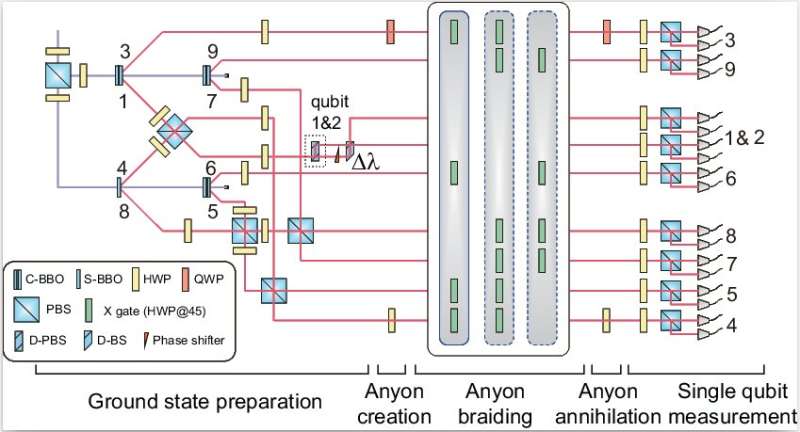Optical toric code platform sets new record

Anyons form the basis for topological quantum computation and error correction, where the topological aspect of anyonic braiding is one of the important features that gives rise to fault tolerance. More qubits to control will assist researchers to explore further.
Recently, a research group led by professor Pan Jianwei and Lu Chaoyang of University of Science and Technology of China successfully designed the largest planar code platform at present using photons, and demonstrated path-independent property in optical system for the first time.
The group first generated the 8 entanglement photons using spontaneous parametric down-conversion and interference. One of the photons is encoded with polarization and path, eventually creating the 9 qubits anyons models.
Then, researchers performed braiding operations on the anyons. Thanks to more qubits, the platform contains enough lattices for demonstration of path-independent property. If two operations have topologically equivalent paths, phase offset of system will remain unchanged. By measuring this offset, path-independent property was observed in the system.
This work provides a platform for simulating the braiding operations with linear optics. Researchers are able to conduct more complicated experiments on the features of anyonic statistics in the future.
The result was published on Optica.
More information: Chang Liu et al, Demonstration of topologically path-independent anyonic braiding in a nine-qubit planar code, Optica (2019). DOI: 10.1364/OPTICA.6.000264
Journal information: Optica
Provided by University of Science and Technology of China





















